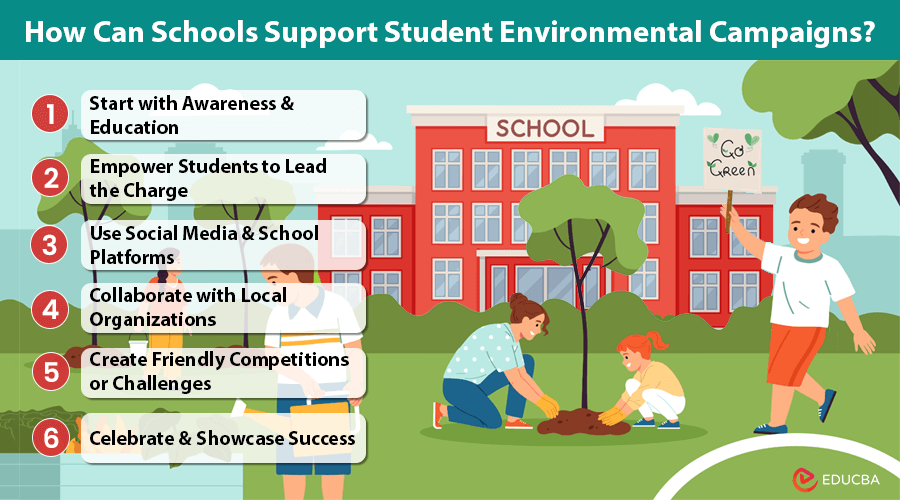
Empowering Students to Lead Environmental Change
Environmental challenges are no longer distant concerns—they are immediate realities affecting communities worldwide, including schools. Nowadays, students are more aware of these issues and want to make a difference. Schools have a great chance to guide this interest by helping students take real action. One powerful way to do this is through student environmental campaigns.
Whether through designing posters, organizing recycling drives, or distributing custom lanyards imprinted with environmental messages, student-led efforts can help make sustainability more visible and meaningful within the school environment. These initiatives also reinforce that lasting change often begins with small, consistent actions. This article explores how schools can support environmental awareness by encouraging students to lead focused, practical campaigns—inspiring them to become the change-makers this planet needs.
How Can Schools Support Student Environmental Campaigns?
Schools can take several simple yet impactful steps to guide students in creating and leading environmental campaigns. Here are some key ways to get started.
#1. Start with Awareness and Education
A successful campaign starts with understanding. Before students can lead green initiatives, they must learn about our environmental challenges. Schools can introduce these topics through subjects like science, geography, and social studies, using real-world examples, activities, and trips to make the issues more relatable.
Guest speakers from environmental groups can also provide valuable insights. Encourage students to ask questions about local environmental issues. Schools can reinforce these lessons by displaying posters, running eco-friendly announcements, and handing out campaign materials like badges.
#2. Empower Students to Lead the Charge
Once students understand the issues, they should be allowed to lead campaigns. Whether starting eco-clubs, organizing clean-up events, or planning sustainability projects, students should be involved in every step of the process.
Allowing students to take ownership of campaigns boosts their confidence and helps ensure the initiatives resonate with their peers. This process teaches problem-solving, responsibility, and teamwork, even if challenges arise.
#3. Use Social Media and School Platforms
Campaigns do not always have to happen in person. Social media and digital tools can help spread the message beyond the classroom. Students can create videos, infographics, and blog posts to share their messages on school websites, newsletters, or social media accounts.
Encourage students to think carefully about creating content that grabs attention and sparks action. Using these platforms helps raise awareness and allows students to develop important communication skills for advocating change.
#4. Collaborate with Local Organizations
Change can be more powerful when done together. Partnering with local environmental groups, nonprofits, or government agencies can help extend the reach of student-led campaigns. These organizations can provide resources, advice, and hands-on opportunities for students.
Involving external partners also teaches students how to build relationships and coordinate across different sectors, giving them skills that extend far beyond the classroom. By stepping outside the school gates, students gain a broader perspective on environmental stewardship and the power of collaboration.
#5. Create Friendly Competitions or Challenges
Friendly competitions can make environmental campaigns more exciting and encourage students to participate. Whether reducing plastic use, collecting recyclables, or creating art from waste, competitions can turn environmental awareness into a fun goal.
Offer simple rewards or public recognition to motivate students, but focus on learning and teamwork rather than winning. Competitions should be inclusive so all students can participate, regardless of age or ability.
#6. Celebrate and Showcase Success
Recognizing students’ hard work is important. Acknowledging their efforts encourages them to continue participating in future campaigns. Celebrate successes through assemblies, newsletters, or social media, and invite the wider community to attend presentations or award ceremonies.
Creating a display to track progress or showcase student projects can also help highlight their achievements. This can ignite enthusiasm for upcoming environmental initiatives.
Final Thoughts
Supporting student environmental campaigns is one of the best ways for schools to raise awareness and build real-world skills. By educating students, letting them lead, and helping them connect with the community, schools can turn concern for the environment into meaningful action. These campaigns help the planet and shape future leaders who care deeply about making a difference. The change starts with them—let us give them the tools and support to lead it.
Recommended Articles
We hope this guide inspires you to take action with student environmental campaigns and make a positive impact on our planet. Check out these recommended articles for more insights into sustainability and eco-friendly initiatives.
